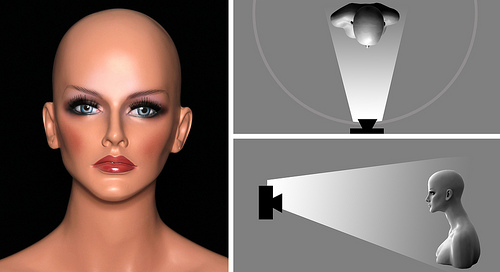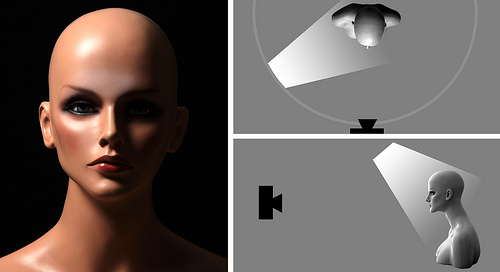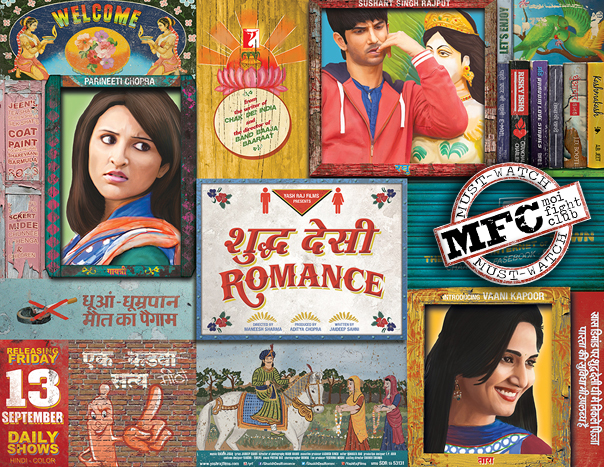We have been thinking about having some filmmaking workshops on a regular basis. It started with our cinematographer friend Mitch aka Mithun Gangopadhyay taking the initiative to conduct a basic cinematography workshop. It was going to be free of cost but logistics always requires money. Thankfully, the nice guys at Babble Fish Productions and LighNLight helped us with the venue, cameras and lighting gear for the workshop. Mithun put out the details on FB group “Crew Call India” and it was open to all on first come first serve basis.
Now that we have tasted blood and it was quite awesome, we have been thinking about making it a regular feature – with screenwriters, cinematographers, production designer, sound designer and the usual suspects.
This is where we need your suggestion and help. The idea is to invite the talent (hopefully there are enough interested souls who would like to share their knowledge) and we figure out the rest. The idea is to keep it free and do it regularly. Suggest and help us with answers to these three questions.
1. What we need – place (at least for 20/30 people to sit) – Do you know anyone who can help us with a place? Either for free (best possible solution) or with nominal charge (we split the cost). Ideally between Bandra and Andheri.
2. If the place is free, a big headache is gone. If we have to pay for it, how much you guys are willing to pay for, say 4-6 hours workshop?
a) less than Rs 500 b) Rs 500 c) Rs 1000 c) more than Rs 1000
3. Any more ideas/suggestions that you have in this regard that will help us make it possible.
Please reply in the comments section under 1, 2, and 3.
Coming back to the first workshop, here are some of the notes that Kartik Krishan managed to take down. Hopefully it will help you. Over to KK.
Our dear cinematographer friend Mitch held a Basic Cinematography Workshop for aspiring directors at Bablefish compound in Lower Parel. It was meant to be an educational non-profit workshop. Have taken few notes and thought it would be good to share it here. Apologies in advance if I have wrongly quoted him. In case you are interested, Mitch is doing another one on Aesthetics this weekend (he is busy or pretending so).
It’s a very interesting yet difficult time to be a filmmaker. Interesting because Technology is cheap and resources are easily available.
But difficult because anyone and everyone can do it. Earlier it took a certain journey to become a filmmaker. Now anyone with a camera claims to be one. To be a filmmaker one has to have something to say and one has to know the tools. For eg: if the camera breaks down, I can’t fix it. But I know how to use it.Cinematography cannot be taught in a day and I will not get into aesthetics at this stage. I will try and cover the gear – how to use it. And also how a director should try and communicate with the DoP. Sometimes even great directors cannot communicate their thoughts/ideas to the crew. Simple things like – framing, headroom etc. Does he want tight controlled frames or loose frames? A DoP should be told what is needed. Eg: A Dir says ‘I need a 4 shot’. So I understand that he wants four people standing in a shot. So I accordingly light it up. But then later he says no just all their faces in a tight frame.
I just spent 30 min on lighting when it could have been done in 15 min. What will make a frame/scene look good ?Not just the cinematographer.
But production design is 90% of ‘good cinematography’. Then Lighting. A white wall cannot be made to look good. I need character. Eg: Graffiti etc. I sincerely recommend all Dirs & aspiring Dirs to put money in Production Design. Lighting can be done in china bulbs if it is a great looking set. Most of the daily soap sets on TV are so bad that no matter what you do, it won’t look good. Get a good production designer. There Will Be Blood’s DoP thanked the Production Designer in his Oscar Thank you speech. Something looking great to eye can be easily made to look great in camera. Something looking shitty to the eye, it’s quite tough to make it looking great in camera.
ASPECT RATIO – CURRENT/RELAVENT4/3 – like the Old TV screens – full gate academy aperture. Everything started with 4/3. Most TV was 4/3. Nowadays even most commercials are in 4/3 safe. I recently did a commercial for Govt of India for which I shot on Alexa – 16/9. But the master went in 4/3. Because the target audience was rural India. ‘No’ – the recent Chilean film was done in 4/3 – shot in a Beta Cam – retro look. Andrea Arnold the director of Fish Tank shoots in 4/3 and she makes great films. I completely agree with her decision to shoot her films 4/3.
16/9 – standard HD aspect ratio for all digital cameras. Red, 5D, Sony, DSLR, Alexa – AD films, TV. The standard format.
CinemaScope – 90% of the films shot in India is reduced to Cinemascope (anamorphic 2.35/1). Nowadays if you don’t have cinemascope format the distributors say ‘Picture mein scale nahi hai, hum nahi khareedenge’. We cannot dictate terms on this. I remember Dilli 6 was shot in 1.85 aspect ratio but the distributors raised a hue and cry about it. But the makers said ‘we’re going to go with this format only.’ So the distributors relented. Another example is the great Vittorio Storaro. I learnt cinema by watching his films. In the past 10 yrs he has proposed a new aspect ratio of 2/1 which is somewhat akin to the Renaissance paintings but no avail. Even he couldn’t change the system.
Super 16/35 vs 16/35 mm – in the latter they use a little bit more of frame (from sound). Look of super 16 is grittier-raw. I feel it is a pretty good format. Before DI, earlier super 16 used to be blown up in 1.85/1 (abroad format). 1.78/1 & 1.85/1 are quite similar. The difference is negligible.
There is no point shooting anamorphic if you are shooting in a classroom. Ever since DI has come they don’t rent anamorphic lenses (because they are slow, heavy and expensive). They usually shoot 16/9 and crop it to anamorphic.
Faster lens means smaller F stop. 1/3rd lets more light in lens than 5/6th. The minimum opening of a lens determines how fast or slow it is.
Roger Deakins hates RED cameras. Both the eyepiece and monitor cannot be played at the same time without an additional component. The Alexa is a closer transitional phase camera. Bhaag Milka Bhaag was shot on Red epic. Matru on Alexa.
CAMERA FORMATS
Super 8 – lots of films. For the vintage look.
Super 16 – Dhobhighaat. Zinda. Good for costs. My fav format ever. Nowadays 50D or 500T is available. Fuji 160D was the most beautiful stock available earlier. Now it’s no longer there.
Just coz it’s on film, doesnt meanit’s good. I’ve seen stuff shot on 5D which looks better than most films. What you put in front of the Lens is more important than what is behind it. The Production Designer, Actors, Lighting etc is more imp than what camera you are shooting in.
While shooting Day for Night – just ensure some basics are taken care of – like not pointing to the sun, take care of the shadow detail.
Most DoPs are not involved in Grading. It’s much easier to grade an Alexa/Sony image than a Red image.
Days of Heaven was shot only on Magic Hours. Magic hour for film is usually 15 min, for digital it is 20 min.
Upstream color is a great looking film which I believe is shot on GH3 cam (Cheap) but still it looks better than 80% of the films. There’s no hard and fast rule.
Half the film Biutiful – is shot in 1.85. The minute the workers die in the warehouse, the film shifts to Anamorphic.
35/Super 35 mm – Alexa, Red, C300/C500 have super 35 sensor. It is the default camera sensor size.
65/70mm & IMAX
DIGITAL
SD – Standard BetaCam/PD 170. 640X480 is SD. Most of the films on TV are SD.
HD – High Definition >= 720p. Has a progressive image. The i in HDi mean interlaced image. All film is 24fps. All TV in India is 25fps. Hobbit was done on Red 3D 48fps. All HD broadcast in India is 720p
True HD – 1080p and above
Ultra HD – 4K and above. The future is Ultra HD.
CAMERA SENSORS
CCD – Older Technology. Not great in low light
CMOS – used in High End cameras. CMOS sensor is better. 5D has a CMOS sensor. The problem with Rolling Shutter is – the image wobbles when you pan fast. The new Sony Cam has Global Shutter.
US is NTSC. India is PAL 25fps.
5D – 5D has a full frame sensor. It was always a stills camera for photo journos. Then they asked for a video recording facility. Over time one could control the camera. Pretty soon everything changed. Docus, Music videos, low budget ADs were shot on 5D, because of the shallow depth of field.
I was shooting a documentary on kids in foster home (where the kids were talking about the physical/emotional abuse they have suffered in their lives). I kept telling the Dir to shoot on a 1/3 Inch camera to capture all action and movement, but he insisted on 5D. The kids were talking extempore. The Dir wanted tight cuts. What will you do with a shallow focus in a classroom ? Most still lenses are not parfocal lenses (Zoom karne par focus chala jaata hai). The truth is that though most Docus are staged but sometimes doing extempore on 5D is tough. One has to be mindful of these things.
Most of the trade off in filmmaking is this – you will only get two of the three factors right at a time.

Earlier when using Film, there would be in camera rehearsal. Nowadays there’s no rehearsal blocking done. That is the reason most Indian films look flatly lit. Because the Dirs say – ‘lighting kar de, blocking baad mein dekhte hain’. Making films is a crew making/management deal. Right person and right tools.
LENSES
Spherical (95% of all lenses) & Anamorphic (Special lenses – heavier, expensive, time consuming). Usually spherical lenses are used most of the times. Super Wide, Wide, Normal, Telephoto, Super Telephoto Lenses.
Usually 85-135 lens is a long lens, used more portraits. Exception- in Amelie, all CUs are shot in a wide angle lens!
Cooke lenses – (British) good romantic high end lenses. Used in Drive.
Zeiss – Used in Skyfall
Master Prime – the sharpest lenses in the world. Soft, sharp, Bokeh, depth of field, flares
Film is a SOFT medium. The old lenses will flare (no coating).
LIGHTING
Color Temp – Each light has a color temp. Daylight is 56K Kelvin. Tungsten household bulbs etc are 32K.
Sony F65 has a tungsten sensor, Alexa – Neutral Sensor, Red – Daylight Sensor
You can mimic daylight with HMI (white light). 100 KV HMI = 10,000 volts light
Tungsten light – if you want a face to look good, this is the best light. Although it is inefficient as it becomes very hot. It has 92-93% Accuracy Color Indentation Index (average ‘good’ is considered to be 85-94%).
Florescent Lights – eg Kinoflows – can give you both Tungsten light & Daylight. Has 89% Accuracy Color Indentation Index.
LED Lights – Not as powerful. Color Tones are also inconsistent. It’s basically an array of lights. Portable and can run on a battery for an hour. Cheap. No clean shadow. The smaller LEDs are called Rosco lights.
You can dim down HMI & Tungsten but you cannot dim down Florescent/CFL. Tree of Life – was shot completely in natural light.
HMI – most popular. 575 HMI is equal in power to 2K Tungsten Light. Though more expensive to rent. But it is more versatile. A ‘joker’ is an 800 Watt HMI.Half Light – only one side of face is visible
Hard Light – gives a very pronounced shadow
TECHNIQUES
FRONTAL HOLLYWOOD LIGHTING – to make everyone look good. The shadows are below the face. With a bounceboard (thermocol) below the actor’s face. This is the best way to light an actress. In Fashion photoraphy – uppar se soft light aur neeche se reflectors.

CTO – makes daylight into tungsten
Diffusion – makes light softer (Tracing paper)
In Godfather one cannot see Brando’s eyes (managed by Top light). There’s always skunk eyes (dark shadows on eyes)- that’s the idea.
In Scandinavian countries – it’s always gloomy, rainy, cloudy. The natural light is soft light, diffused.
Always put color before diffusion paper
REMBRANDT LIGHTING – Light is on the right or left side (45 degree to face). Most classical paintings. Dramatic High Contrast.

BUTTERFLY LIGHTING – In between Hollywood & Rembrandt.
Film Noir is usually Hard Light. Like Sin City. A Rom Com is usually Soft Light.
Let the Right One is great because for a horror film, everything is so brightly lit
* Check out the Light ka swash book (similar to the color palette that Art Dirs carry)
THREE POINT LIGHTING – Key light to light your actor/product. The most imp light on the key side of the face. It is what gives illumination to the scene. You want to shoot mostly in the Fill side not the key side. Camera is facing Shadow side and then you put a fill light to show the face. There’s usually a 2 stop diff between the Key & fill.

If the fill light is behind the actor then it is Backlight/Edge. South Indian films are back lit heavy.
COVERAGE
A shot list is important so that everyone in the crew knows what you want. Storyboards are a MUST on low budget films as opposed to Big budget films. The idea is that first actors blocking & camera rehearsal is done only with the HoDs and then the actors can be sent for makeup/costume while lighting can happen in the background.
SOFTWARE HELP
Artemis (Viewfinder) – you can save it and print it out too
Helios (for DoPs) – Tells you the position of Sun
P Cam (for DoPs) – Lighting Software
Tech Scout (for DoPs) – Lighting Requirement







